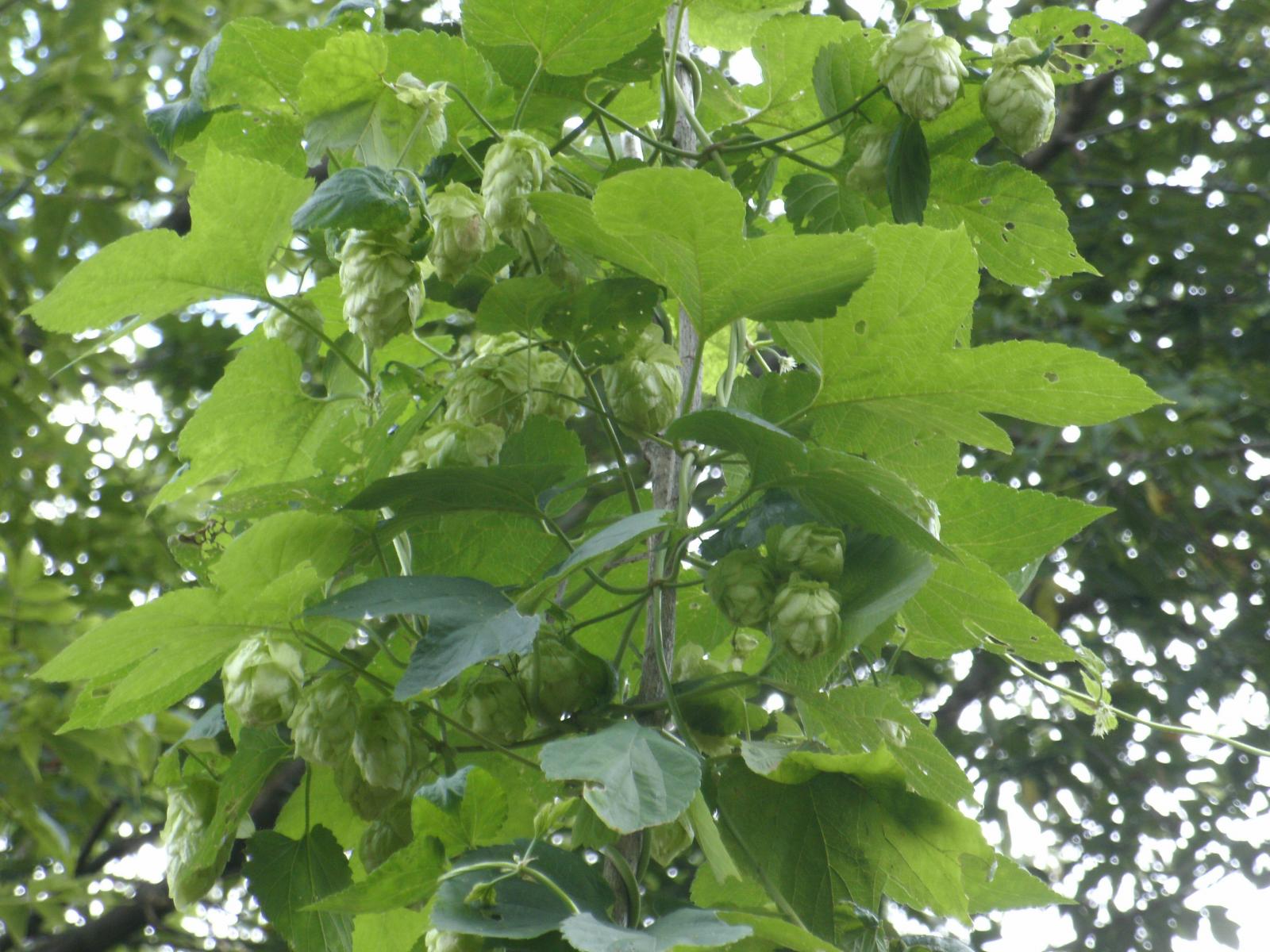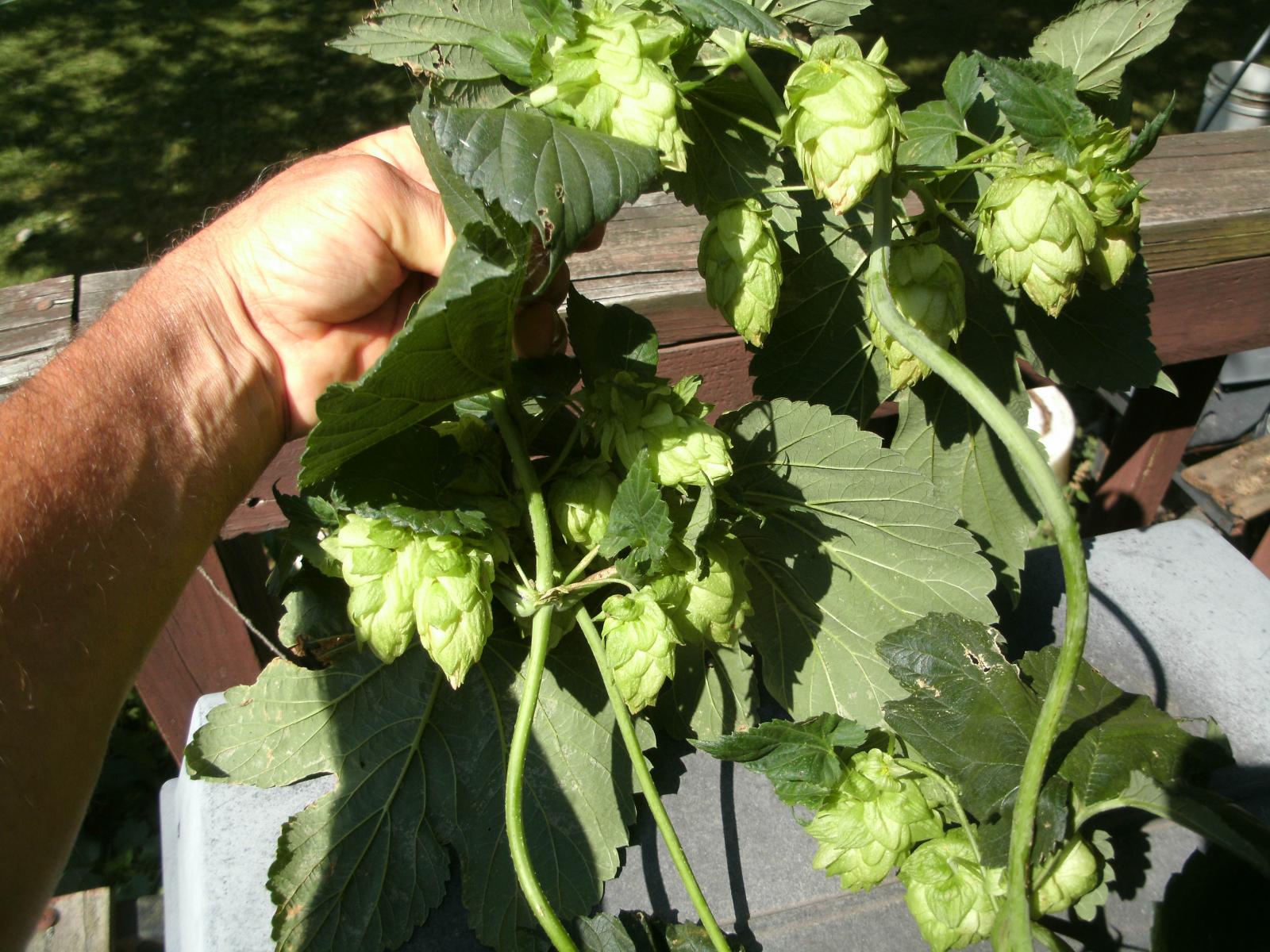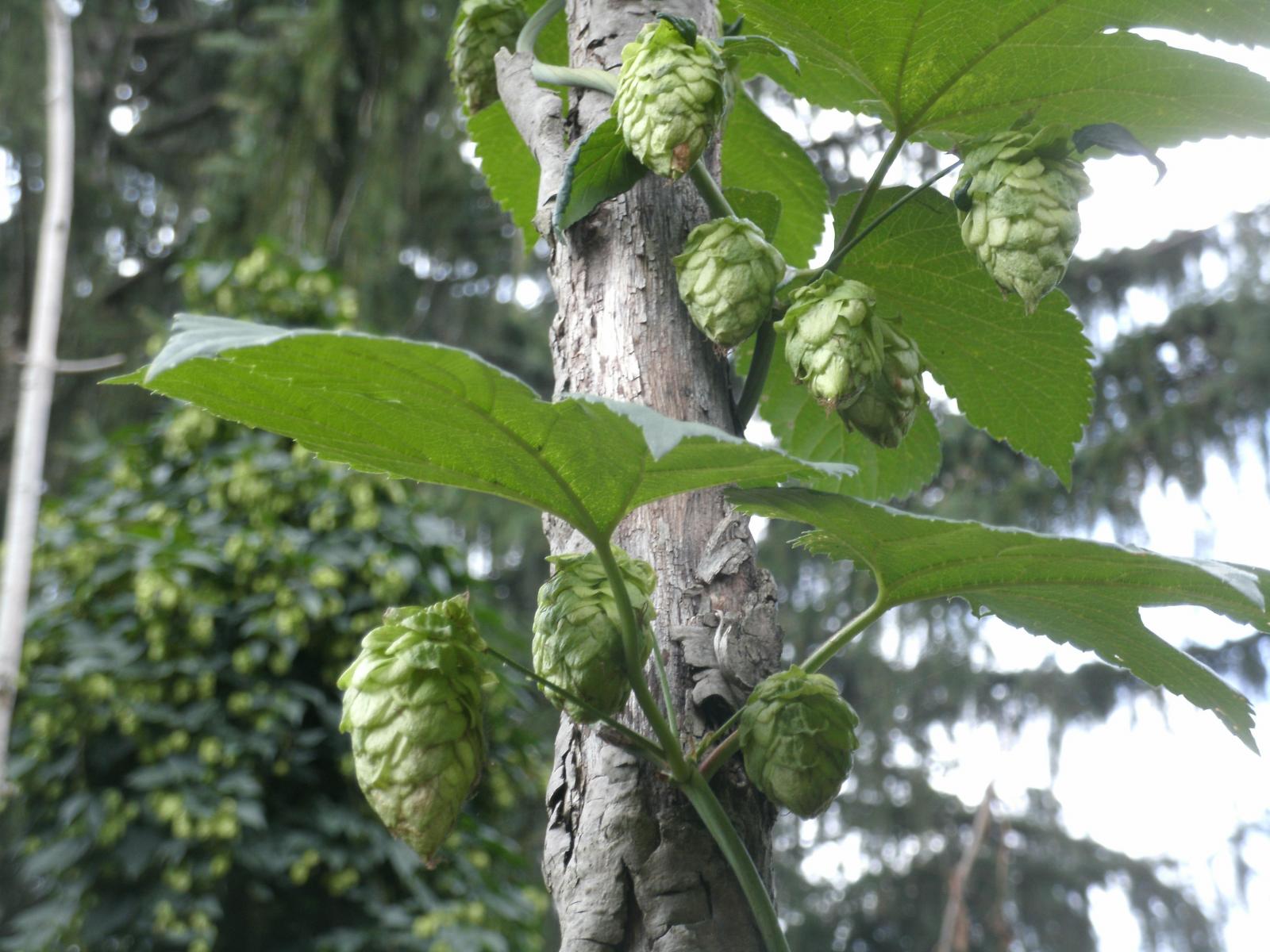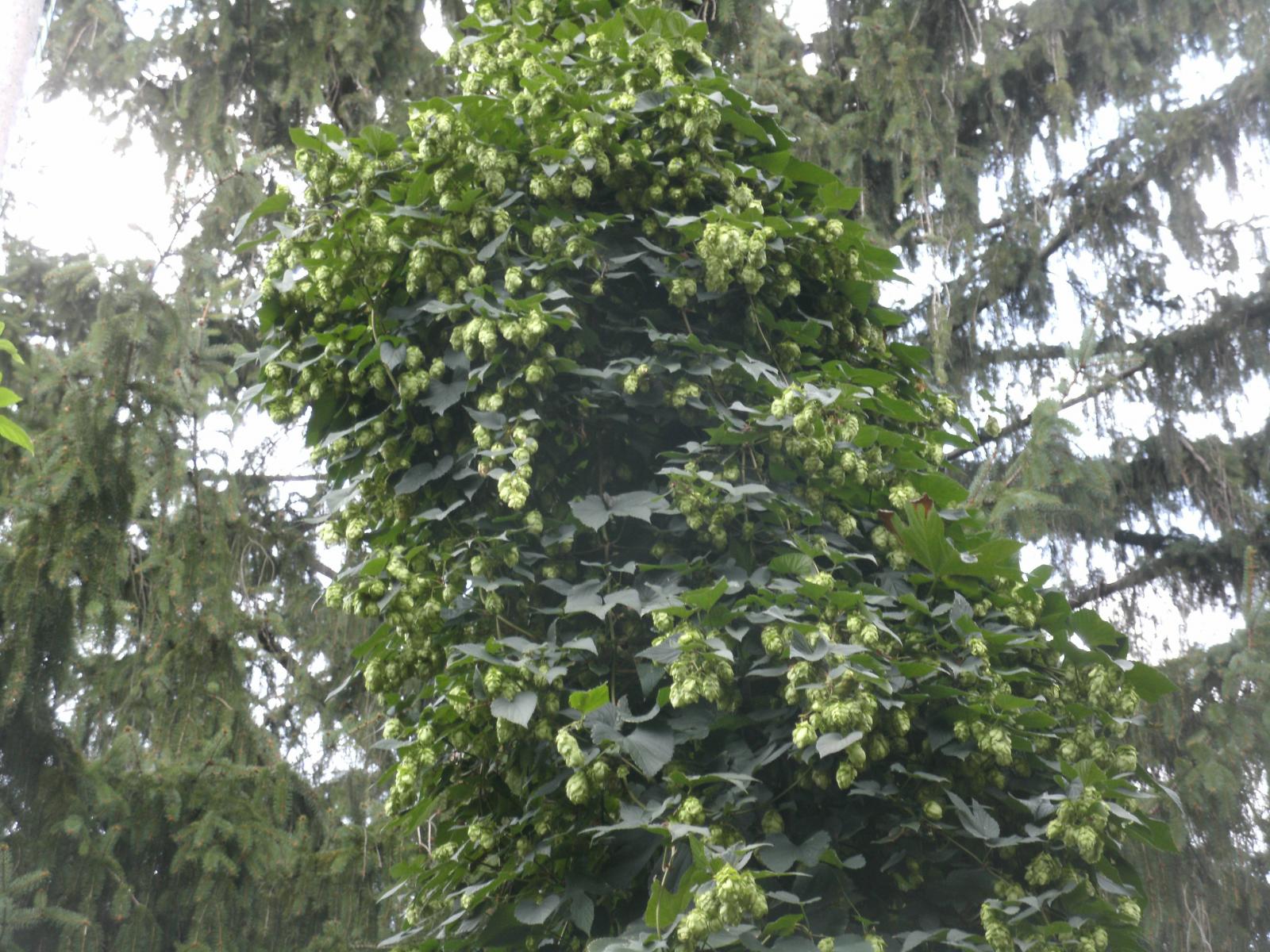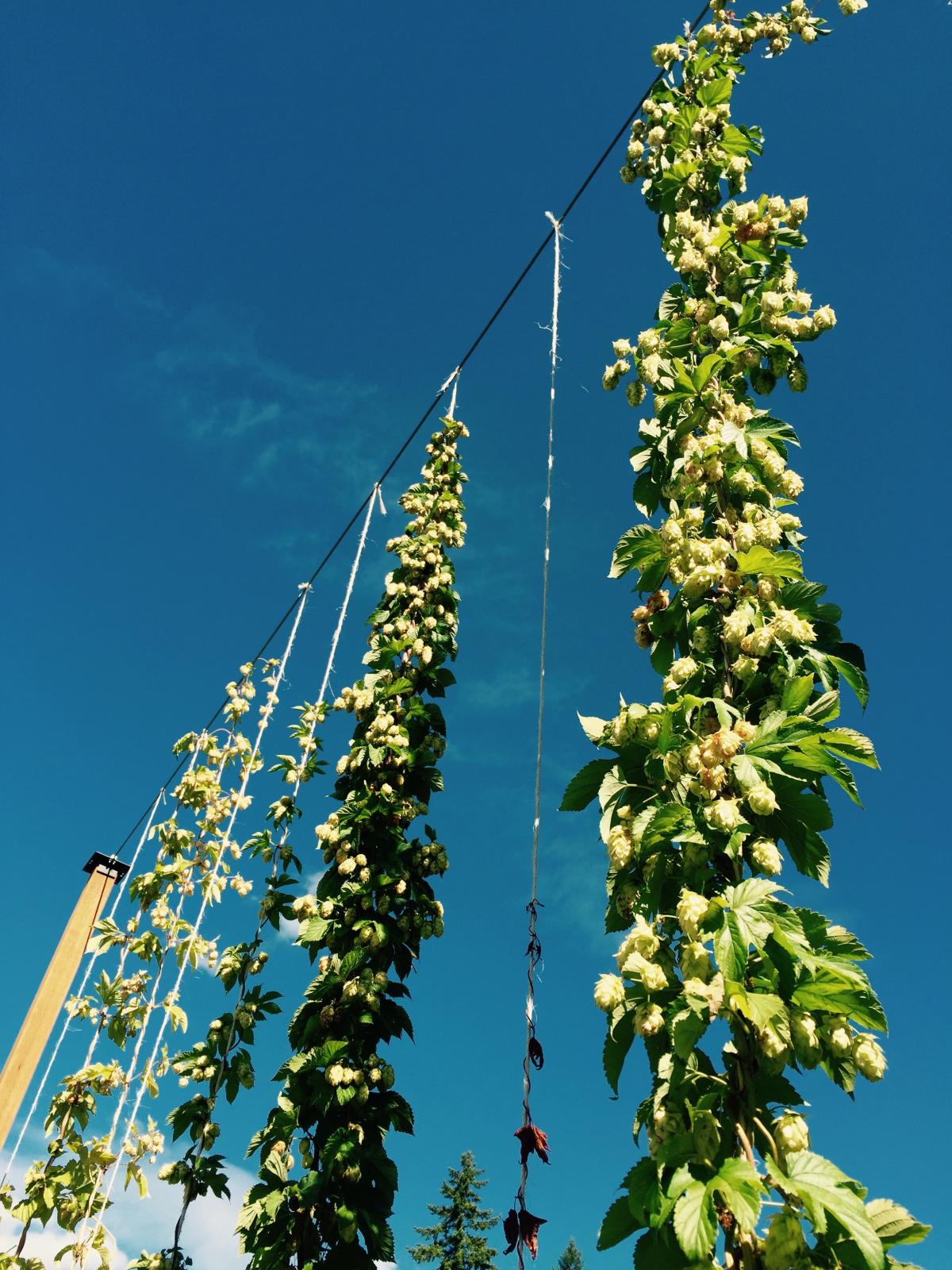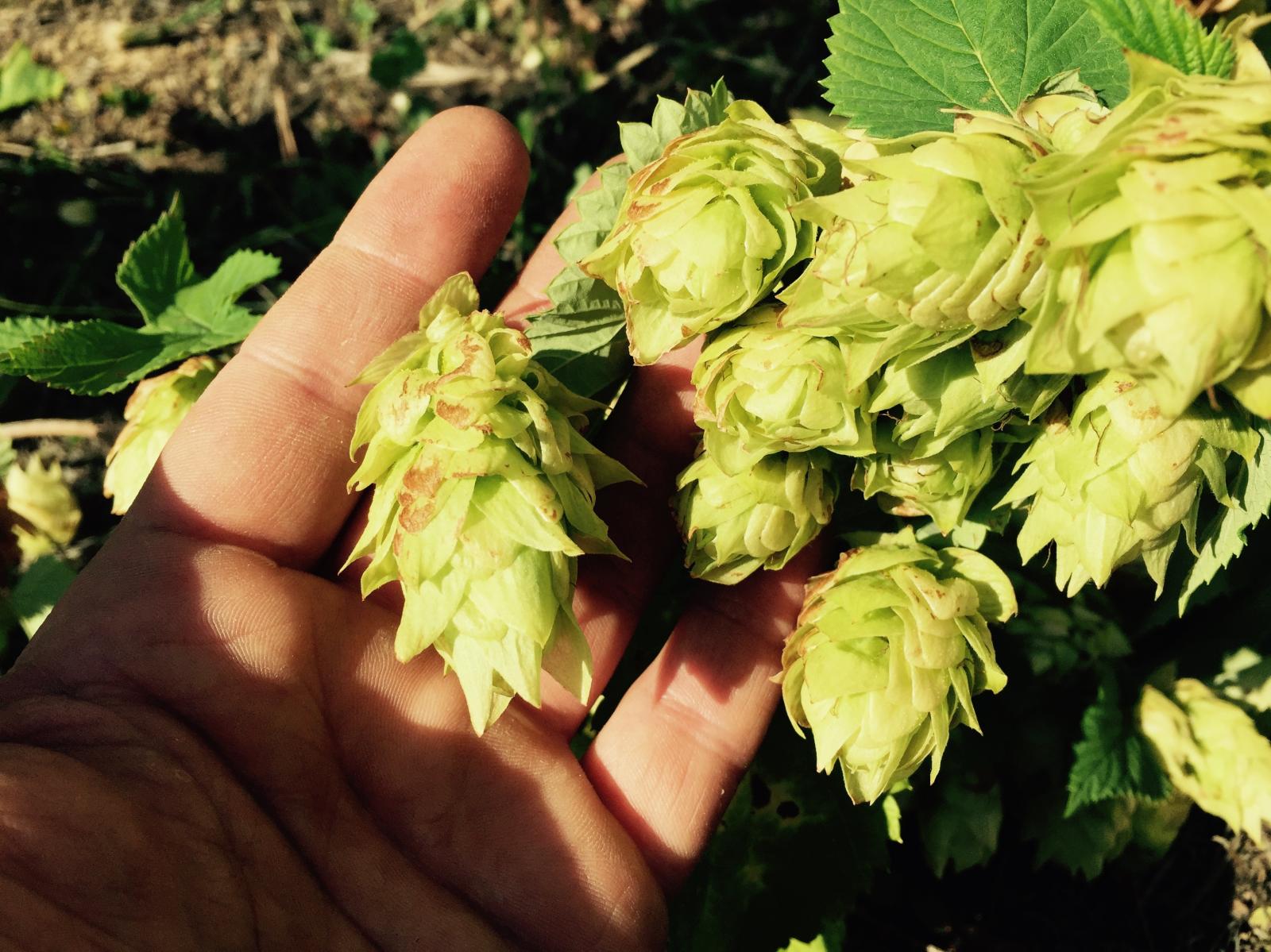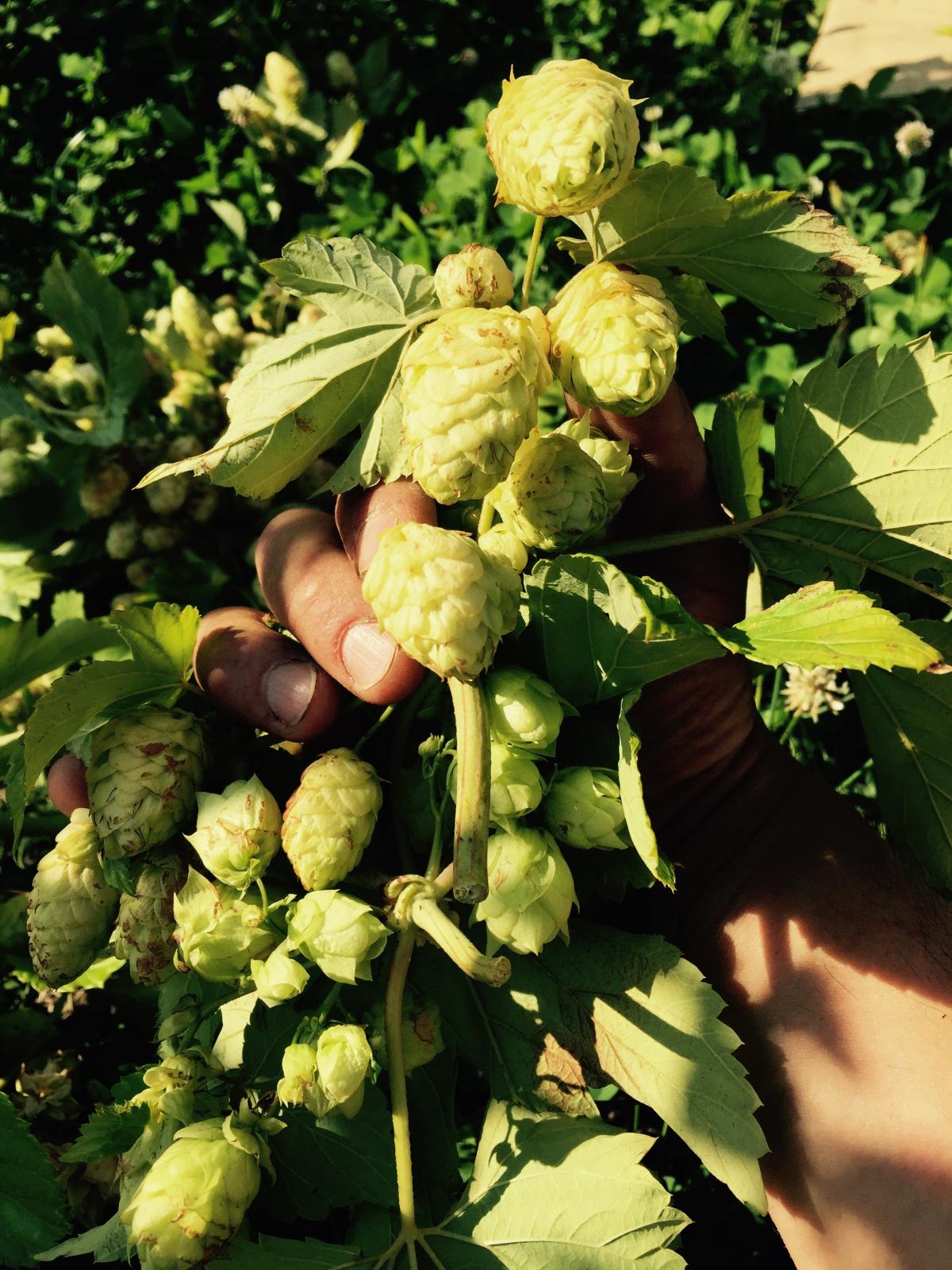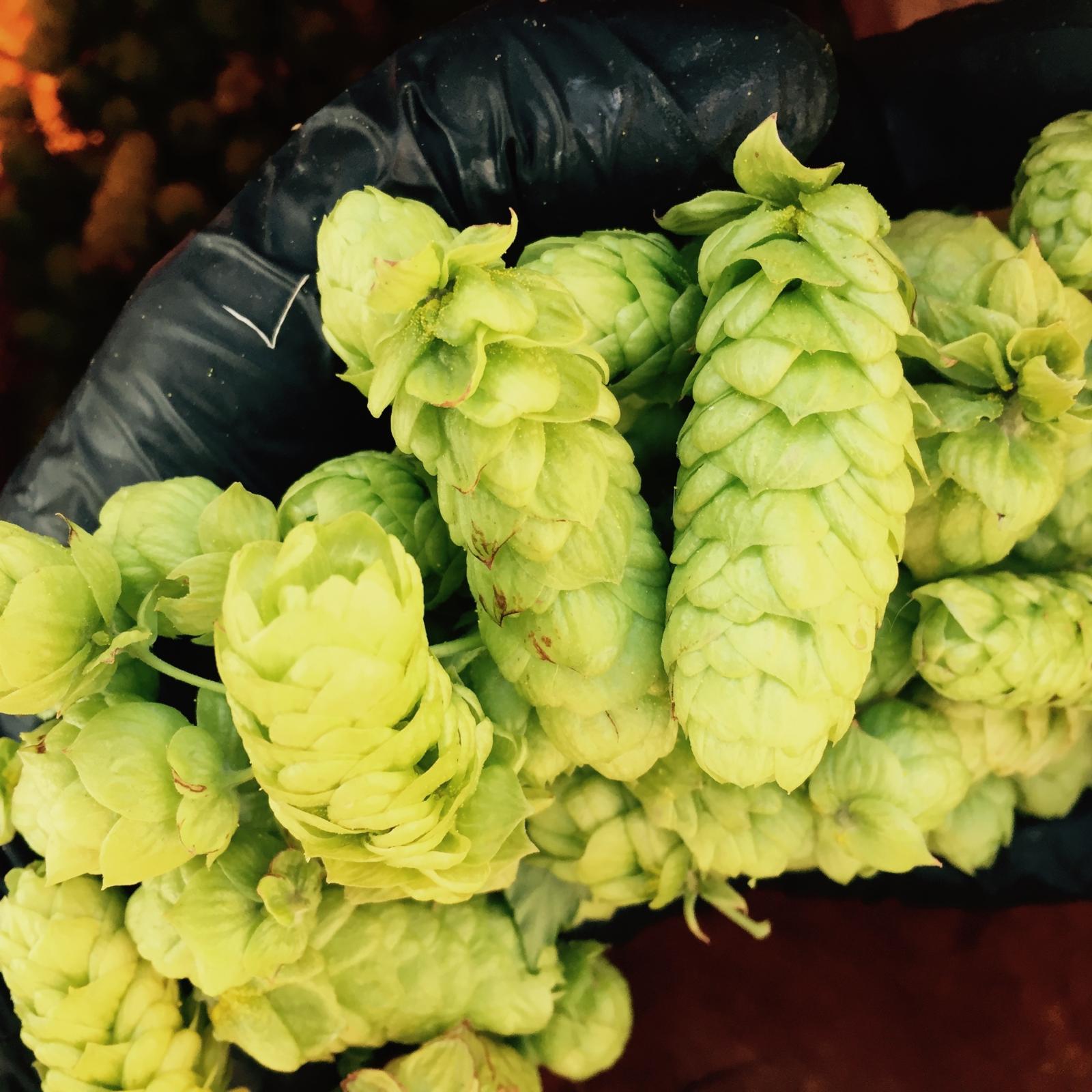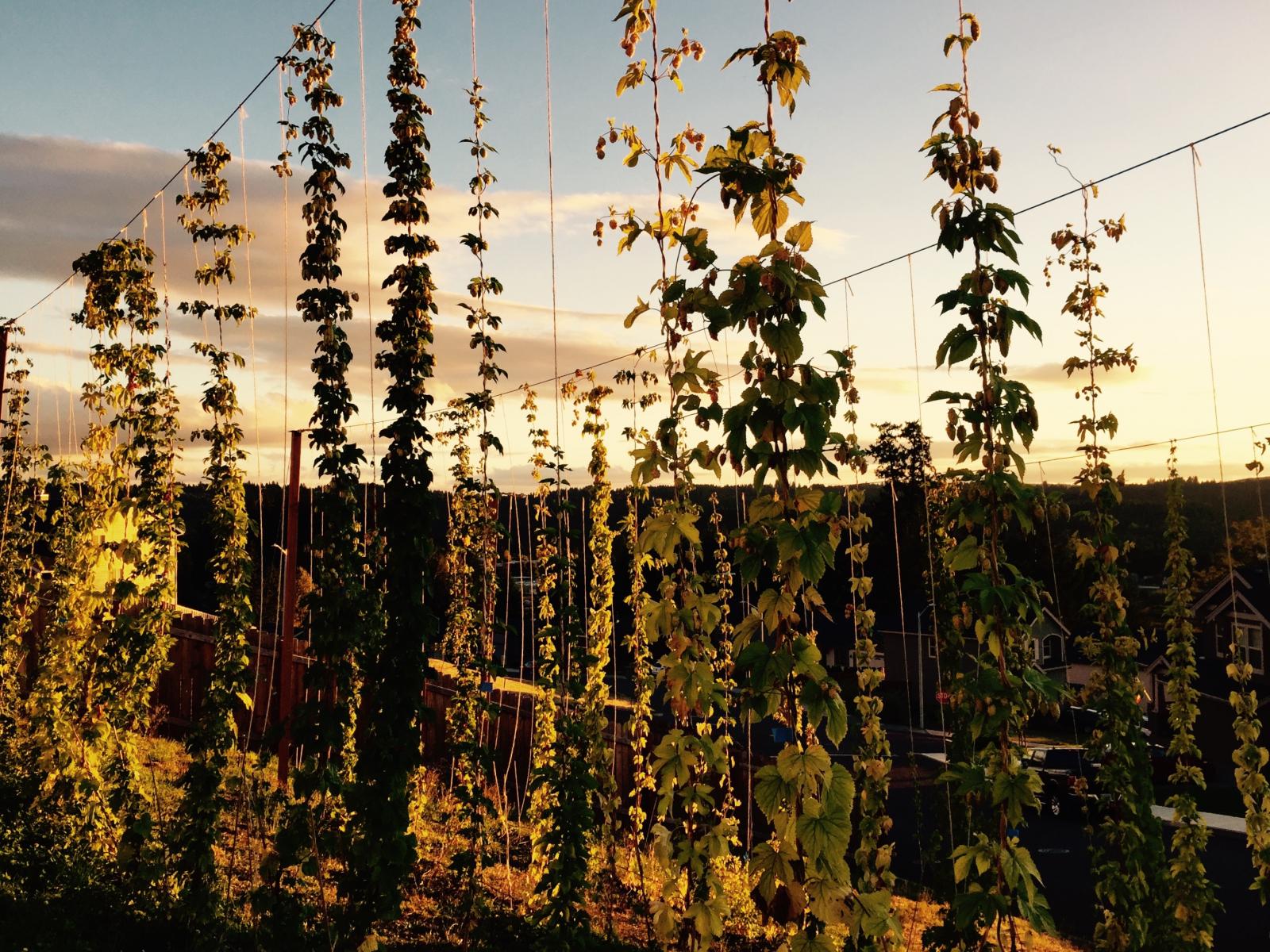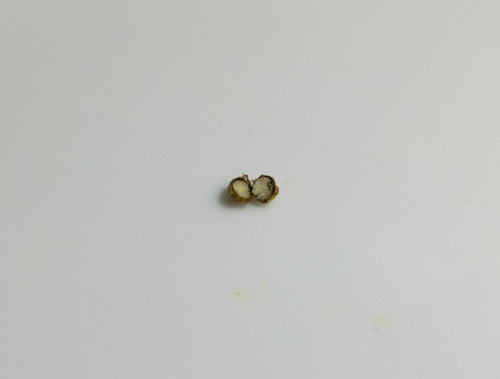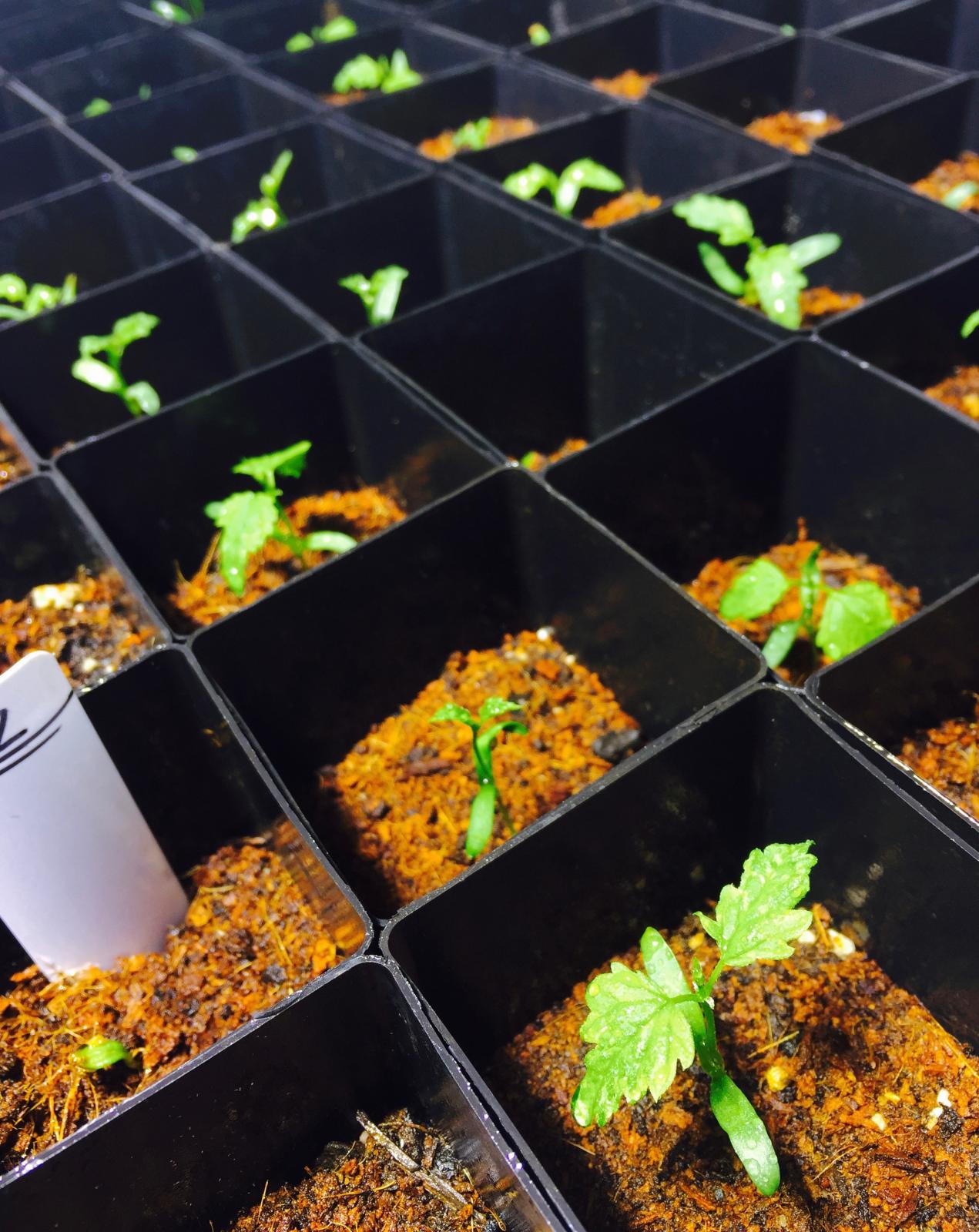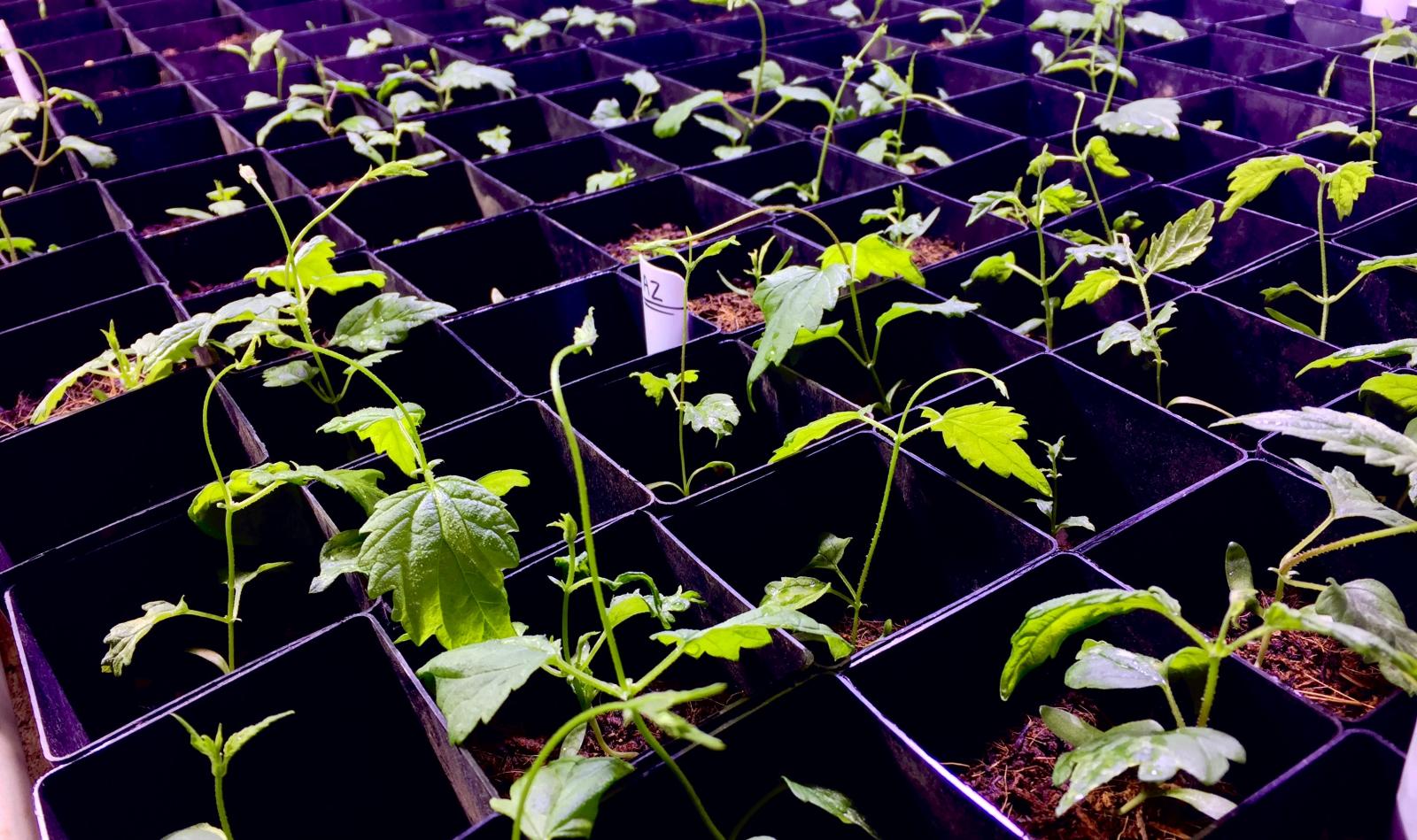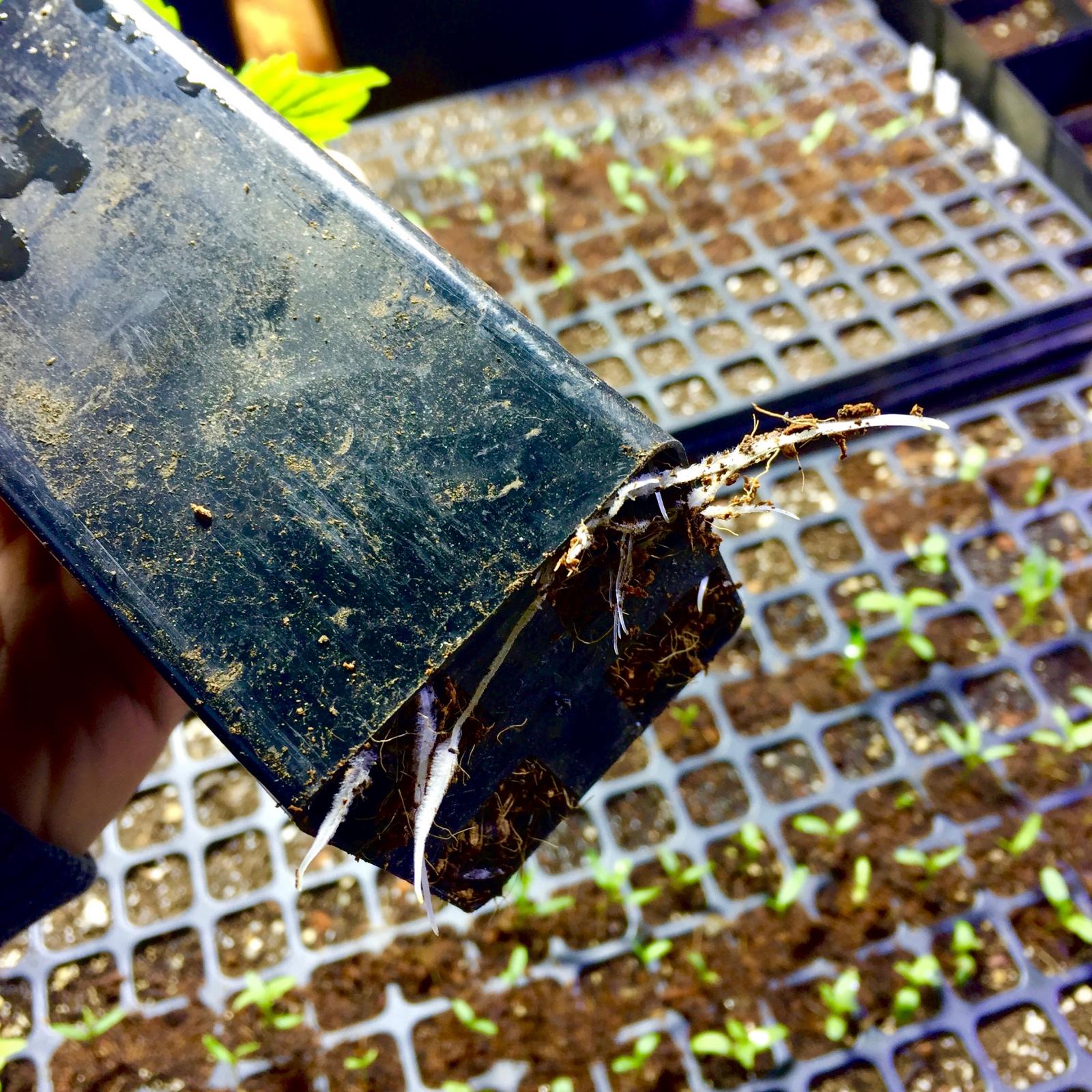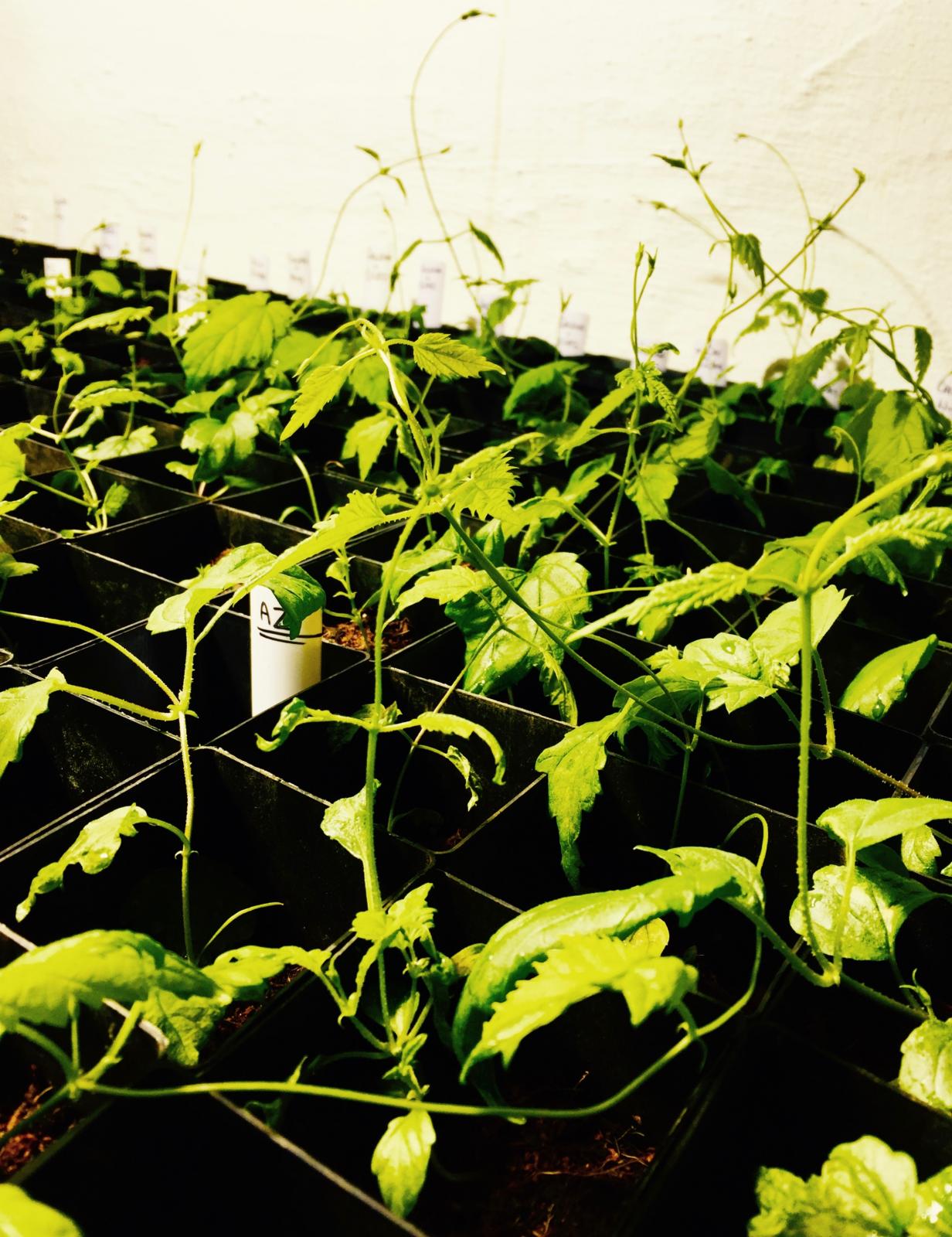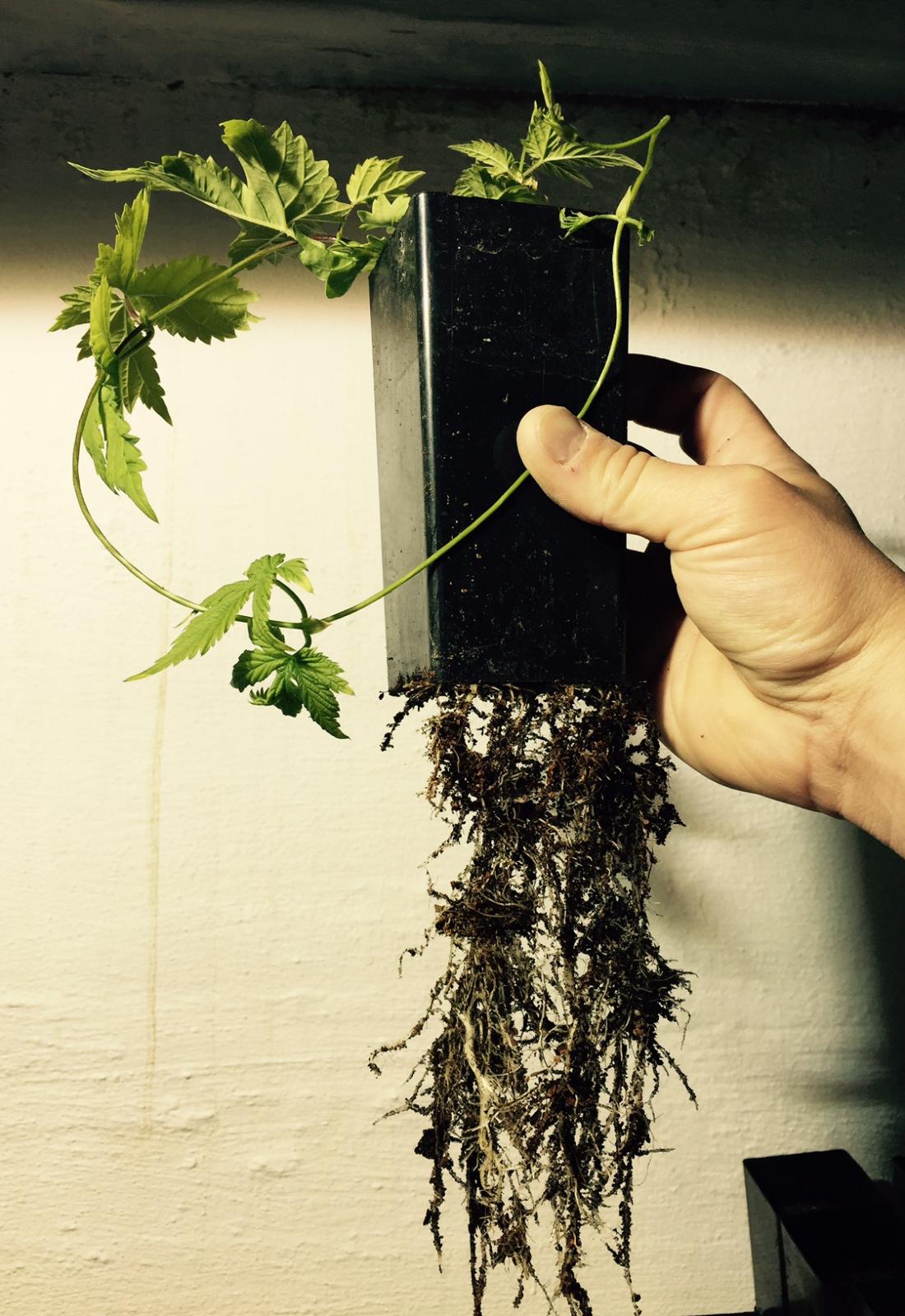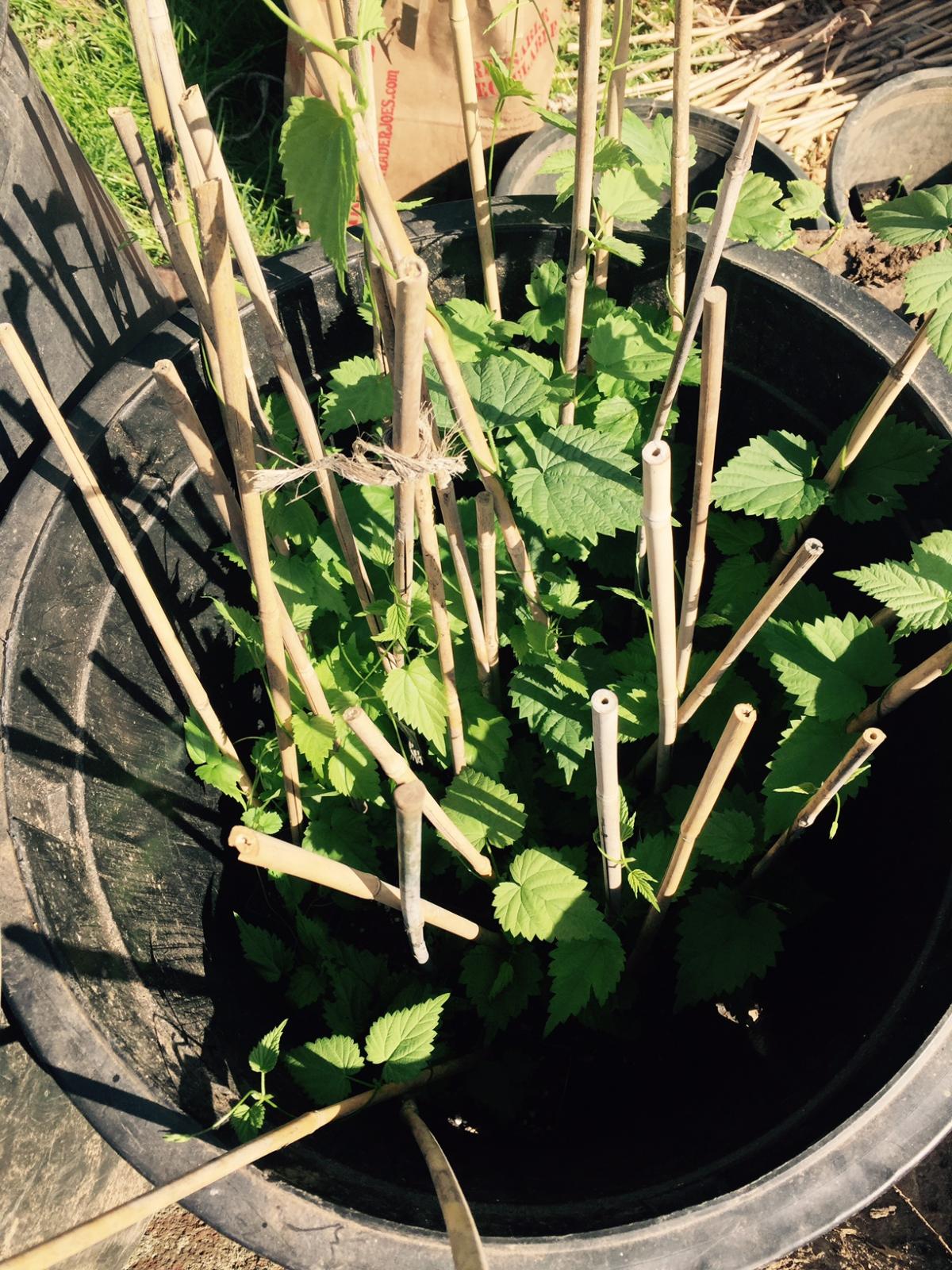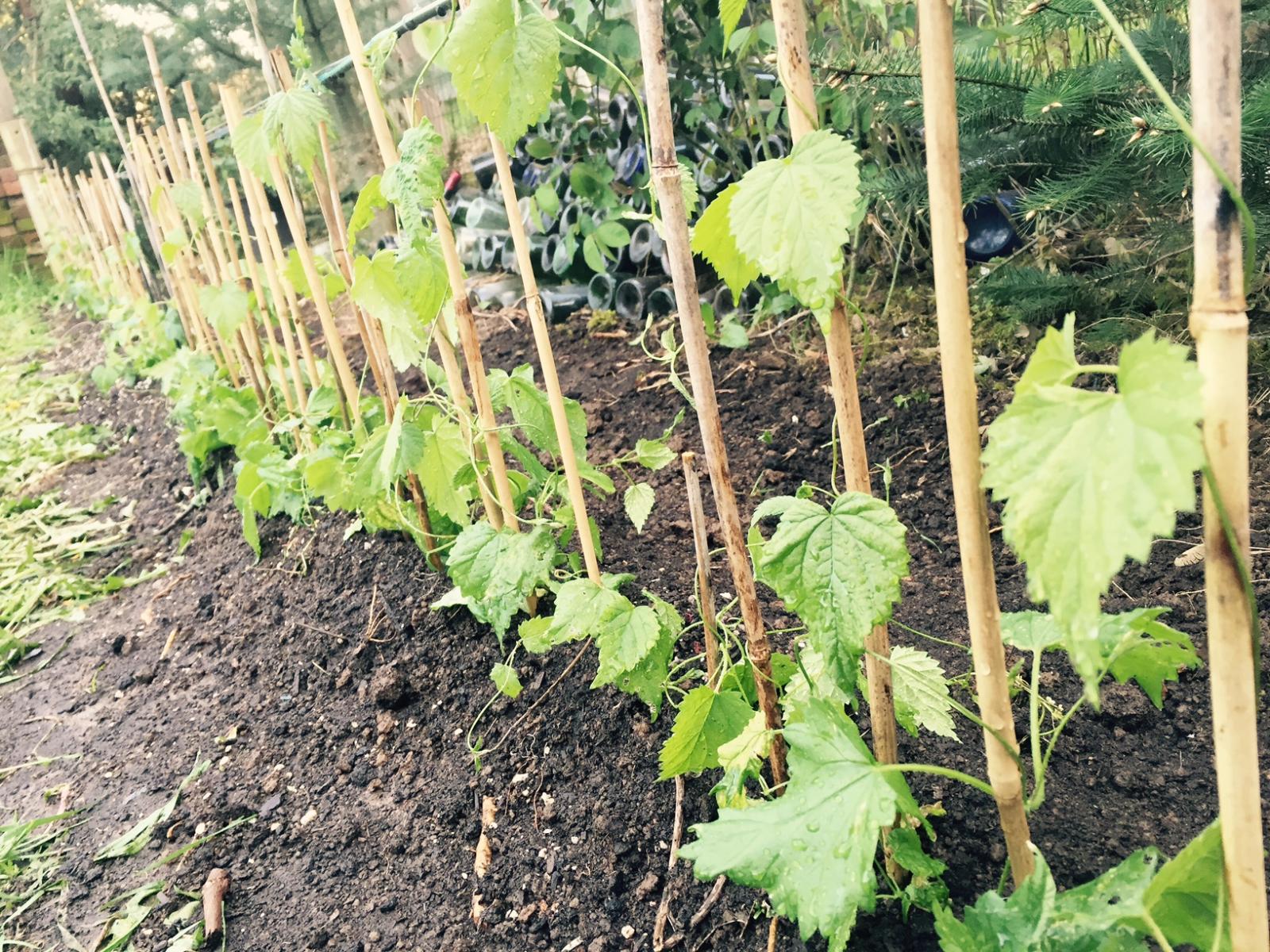ffaoe
Well-Known Member
So today most of the flowers on my first male hop plant open up so I started cross breeding. I wasn't entirely sure the best method for hand pollinating. What I did was cut clusters of male flowers and brush them against clusters of burrs. I then tagged the groups of burrs. I did this for my centennial and brewer's gold plants. The burrs on the centennial were very close to the bine so I was unable to place a protective bread bag over top like I did for my brewer's gold. I have a second male plant that looks like it should flower next week and will repeat the process.
Any reason why my method should not work?
Edit: 7/18/15
Tried the paint brush method today which worked surprisingly well. I used a cheapo plastic watercolor brush to dust the pollen from several flowers into a 2 dram glass vial. I then brushed the pollen onto burrs of a female. The pollen is very easy to see on the black plastic brush bristles.
Any reason why my method should not work?
Edit: 7/18/15
Tried the paint brush method today which worked surprisingly well. I used a cheapo plastic watercolor brush to dust the pollen from several flowers into a 2 dram glass vial. I then brushed the pollen onto burrs of a female. The pollen is very easy to see on the black plastic brush bristles.


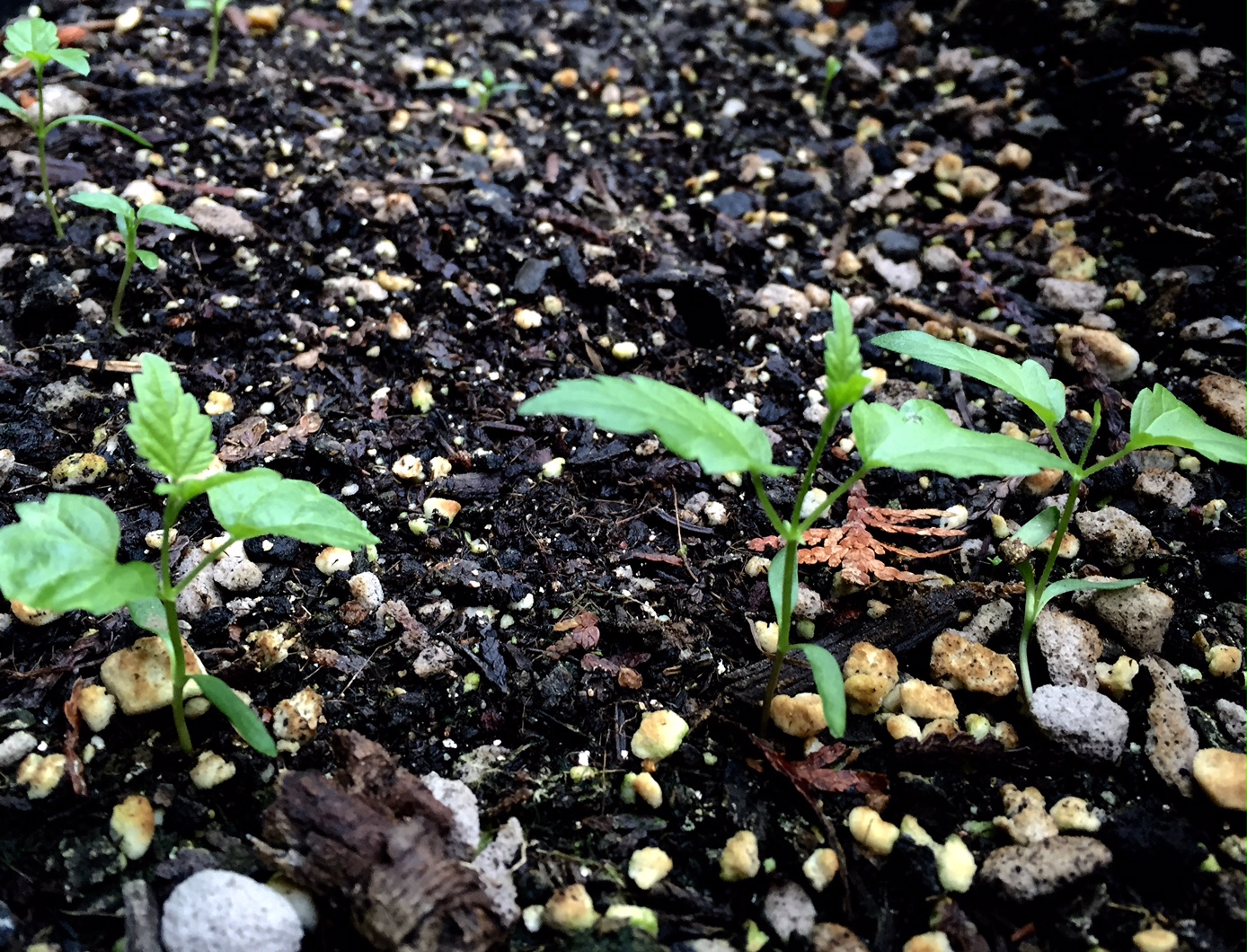

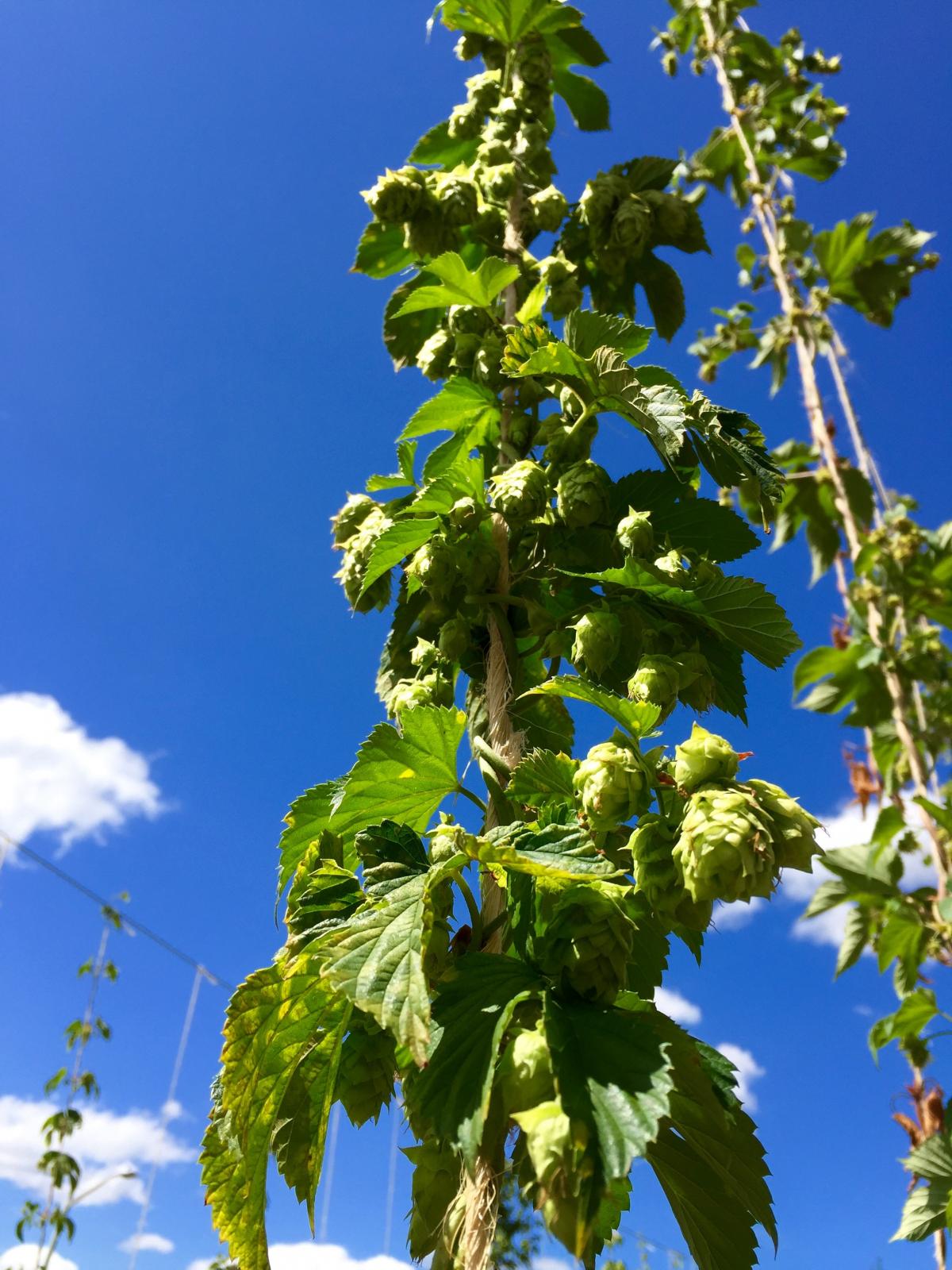
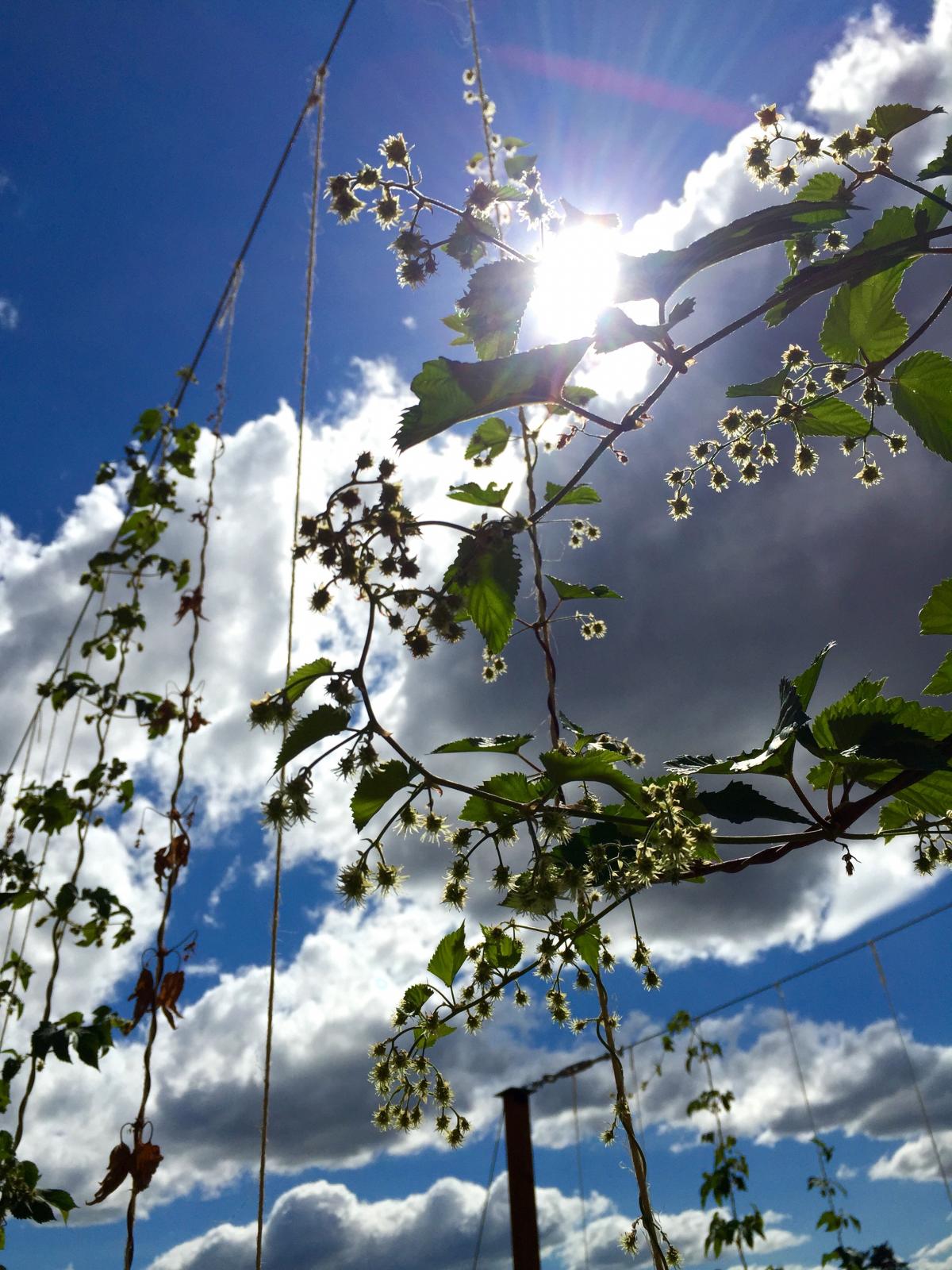
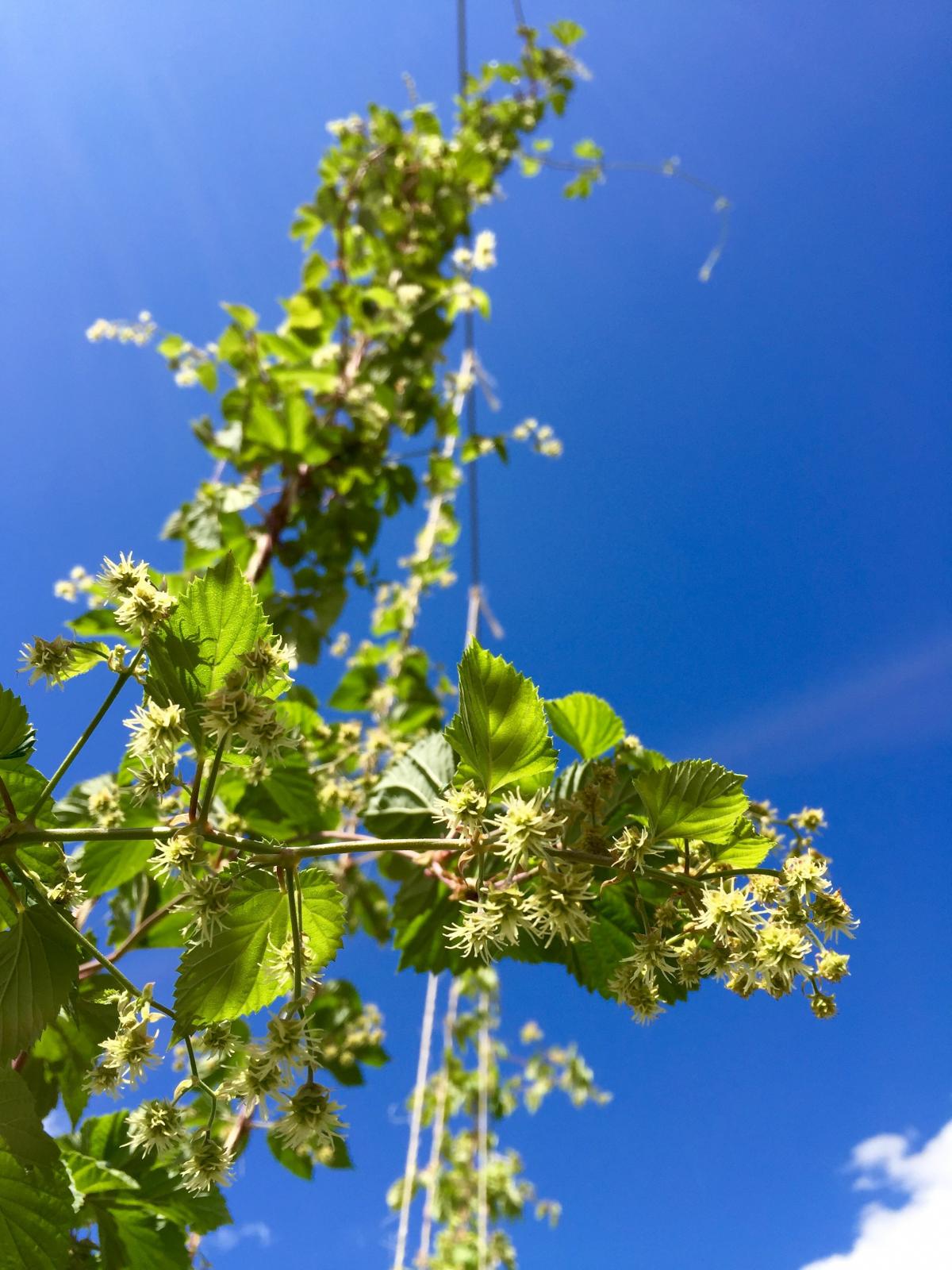
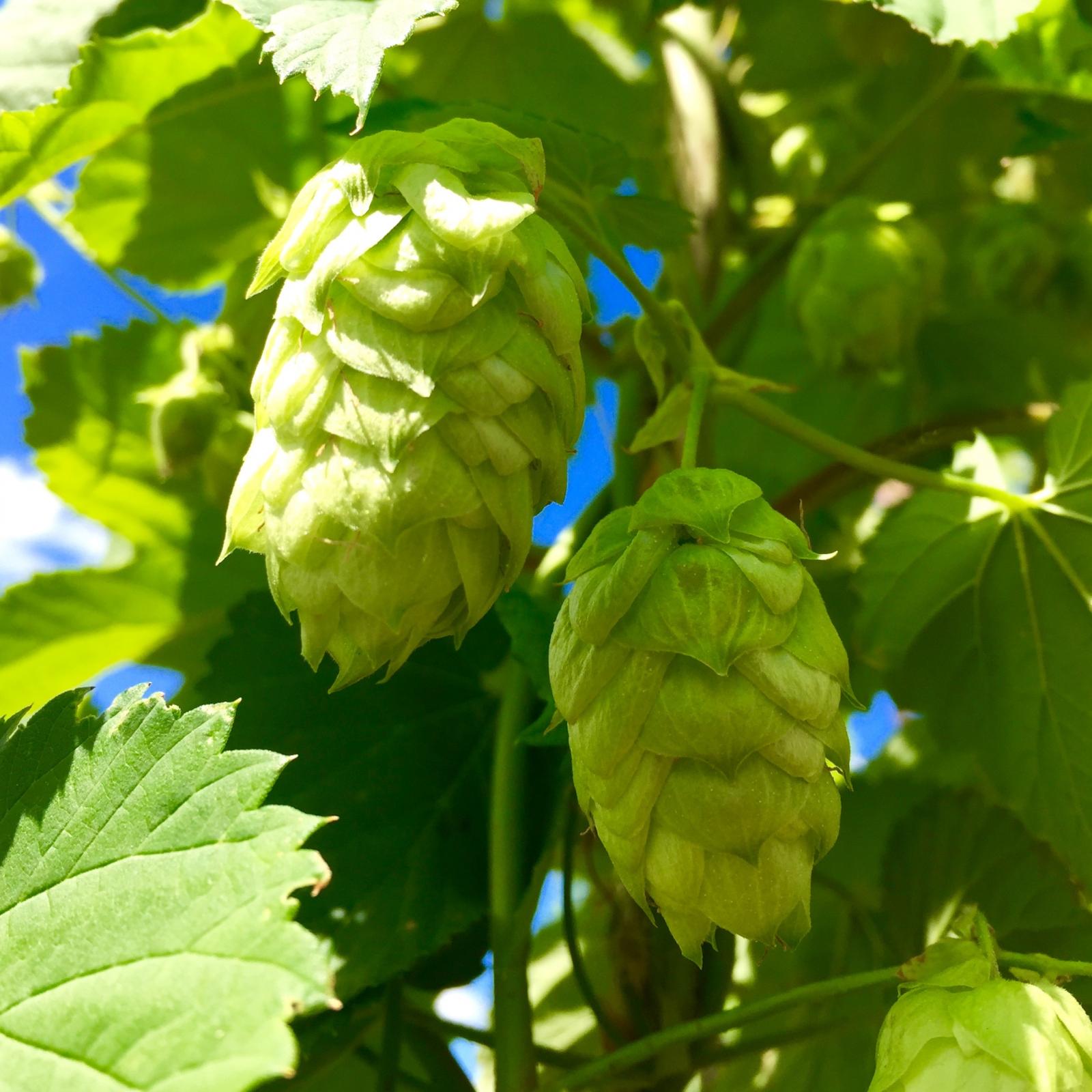

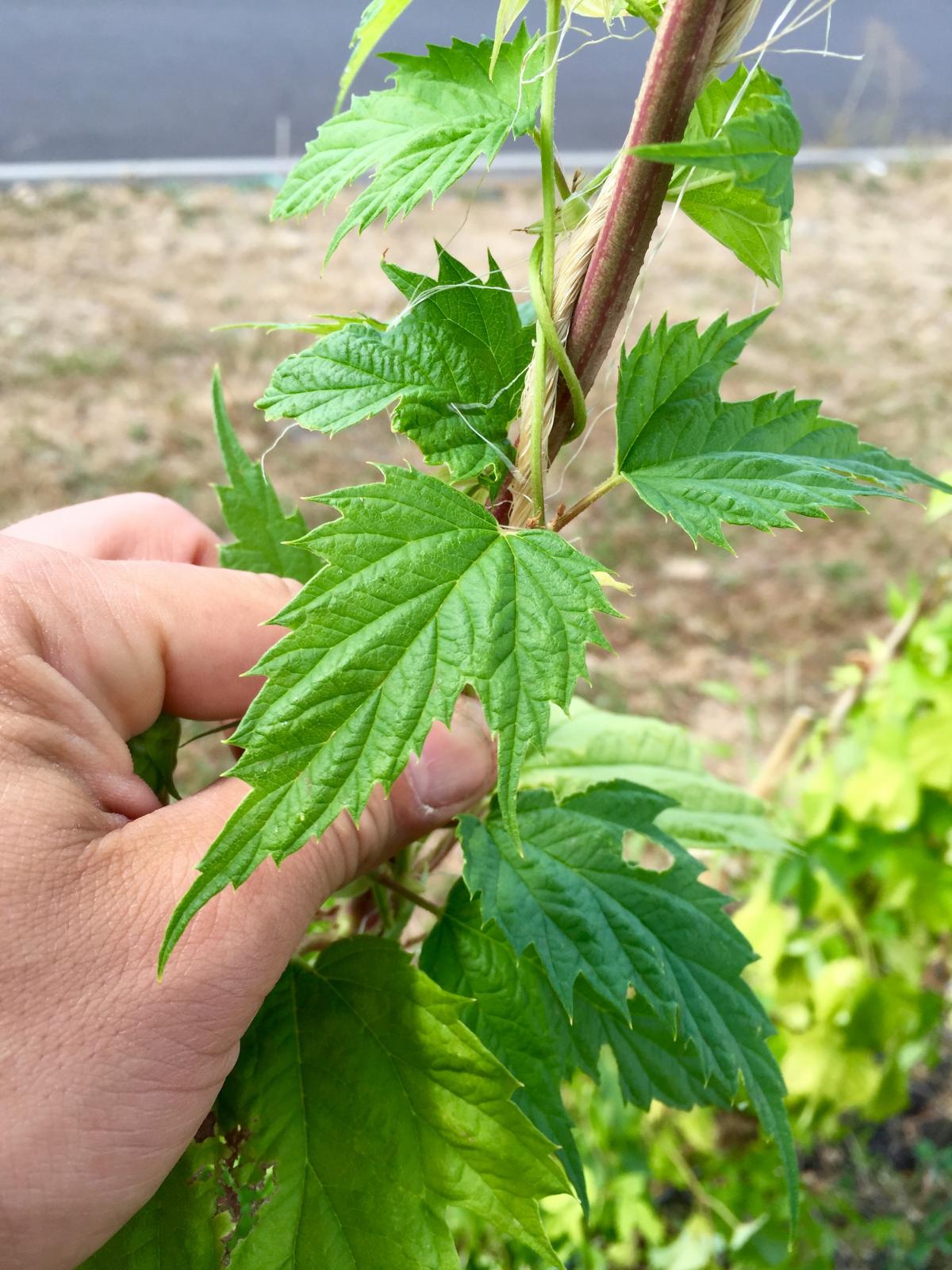






























![Craft A Brew - Safale BE-256 Yeast - Fermentis - Belgian Ale Dry Yeast - For Belgian & Strong Ales - Ingredients for Home Brewing - Beer Making Supplies - [3 Pack]](https://m.media-amazon.com/images/I/51bcKEwQmWL._SL500_.jpg)



























